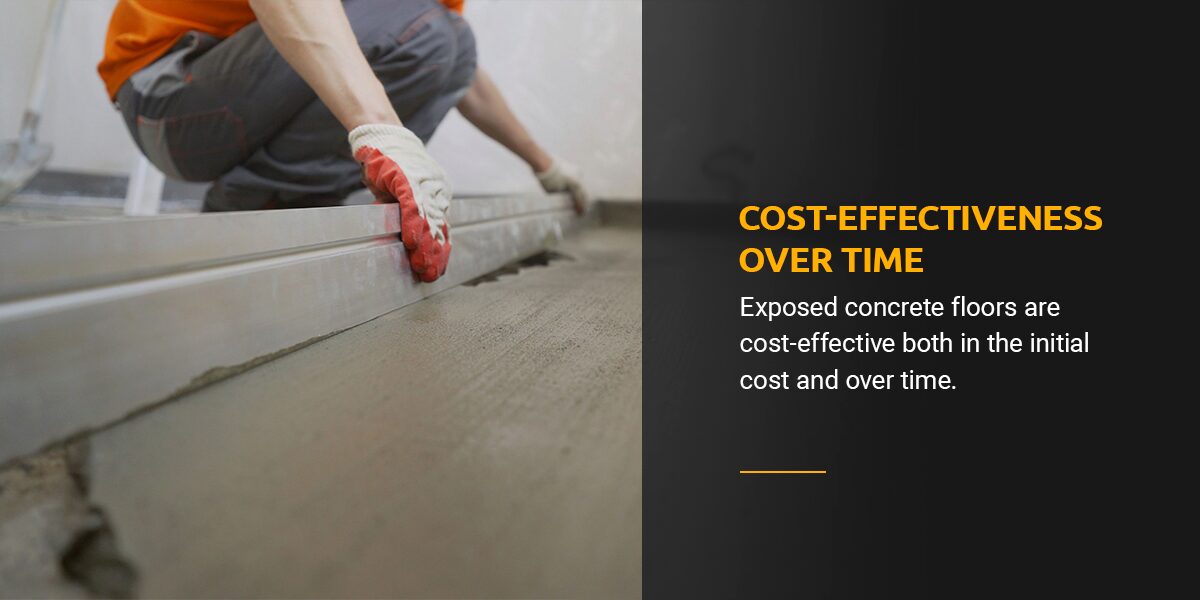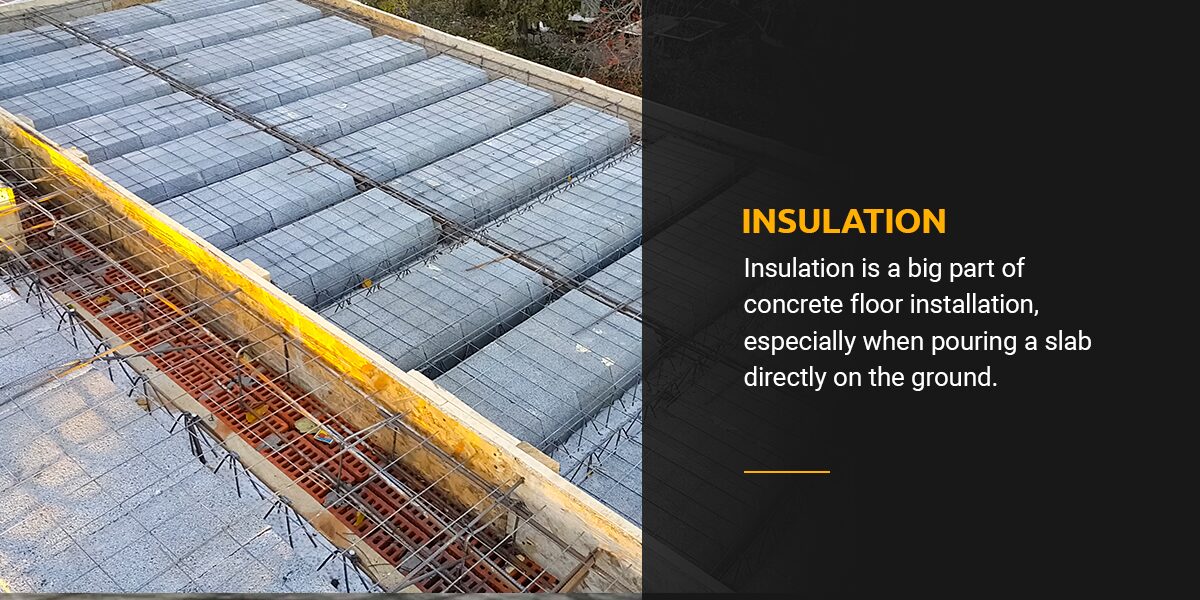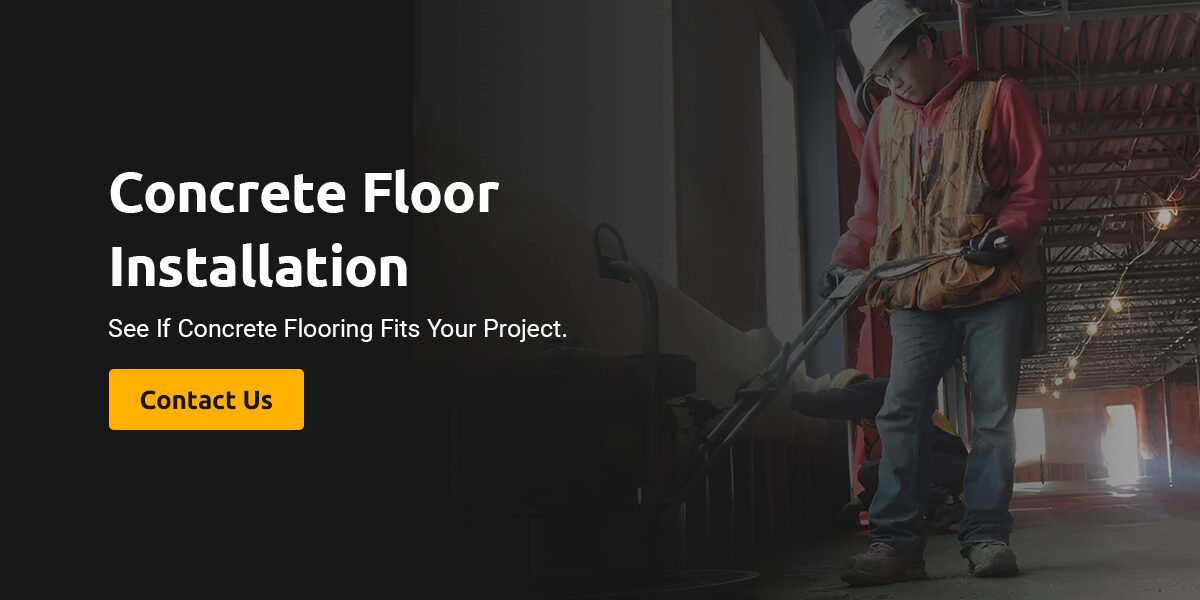
Pros and Cons: Concrete Floor Edition
Posted By:Dynamic Concrete Pumping , Date: Nov 24, 2025

Concrete flooring has been a staple for ages, often serving as a go-to solution in commercial areas that experience heavy foot traffic. Concrete is one of the strongest flooring materials due to its primary ingredient of cement. It also comprises other materials such as sand, aggregate and water. Concrete floors are generally poured as a subfloor or on top of a subfloor, depending on a project’s specific requirements.
Despite the demand for concrete and its advantages, concrete flooring comes with its unique considerations. Understanding the pros and cons of concrete floors is crucial to achieving an excellent and durable finish if you’re considering this flooring material for your commercial project.
The Advantages of Concrete Floors
Modern concrete floor installations have much to offer, particularly in commercial spaces, where their advantages outshine those of other materials. Here are the main advantages of concrete floors:
Durability and Longevity
One of the top advantages of concrete flooring is that it’s extremely durable and long-lasting. As a favorite of most industrial settings, concrete is proven to withstand challenging environments such as high and low temperatures, chemical spills, heavy foot traffic, fires and other forms of wear and tear.
Concrete is popular for its longevity, as its resilience is not limited to the first few years. With proper care, which typically involves minimal maintenance, concrete floors can last decades.
Low Maintenance Requirements
While concrete flooring is durable and resilient, like any other flooring material, it’s subject to general wear and tear over time. It needs periodic sealing depending on the level of traffic. As years go by, the floor will settle and cracks may appear, calling for professional concrete restoration.
Still, compared to other alternatives, concrete floors need little maintenance to keep them in excellent condition. Once sealed, they’re resistant to water damage and stains and are easy to clean. Upkeep involves sweeping and mopping, using soap and water as necessary. A concrete floor generally doesn’t require special products or equipment to maintain its appearance.
Here are things to consider when cleaning concrete floors:
- Sweep, vacuum and mop floors to prevent dirt from scratching the surface.
- High traffic areas require regular cleaning, which helps handle wear and tear.
- Cleaning spills immediately is necessary as the floor may absorb the spill, resulting in staining or damage.
- Ensure cleaning agents are specifically designed for use on concrete surfaces. If unsure, use a mild detergent.
Design Versatility and Aesthetics
Concrete flooring offers numerous design options that enhance both the appearance and functionality of the space. These different finishes provide a diverse range of concrete floor options. Here are common flooring treatments for concrete floors:
- Polish: This is a functional and basic finish that involves grinding the surface with fine, abrasive pads. A polished treatment has a glossy appearance and is easy to maintain and clean.
- Stamping: This decorative finish involves pressing patterns on freshly poured concrete. It’s designed to mimic various materials, such as stone or brick. While wet, the concrete can be embedded with fine aggregate or glass for a high-end and texturized look.
- Coating: Concrete floors are also commonly coated with materials like epoxy resin, which protects the surface, making it resistant to stains, chemicals and abrasion. It’s one of the go-to concrete floor ideas for industrial spaces, commercial kitchens and garages.
- Dyeing: Concrete floors can be treated with a colorizing agent that produces a solid color appearance similar to paint. Unlike paint, which only applies to the surface, the dye permanently seeps into the concrete, creating a vibrant finish.
- Acid staining: A stained finish involves adding an acid-based chemical to a concrete surface. The chemical reaction creates a colorful surface with a range of earthy tones.
Sustainability and Energy Efficiency
Historically, concrete has been known for its potentially harmful effects on the environment, particularly those related to the production of its main ingredient, cement. With recent, innovative developments, modern cement production and concrete constructions are becoming more sustainable as the industry gears toward decarbonization by 2050. The industry is exploring alternative cementitious materials like fly ash and slag to reduce the carbon footprint of cement production.
Concrete flooring is one of the most energy-efficient options today. A concrete floor has a high thermal mass, which reduces temperature fluctuations, resulting in lower energy costs. Concrete’s density allows it to absorb and store heat during warmer periods and release it when temperatures drop. This passive heating and cooling effect minimizes reliance on HVAC systems, leading to significant energy savings over time. Plus, the durability of concrete floors reduces the need for frequent replacements, which conserves resources.
Cost-Effectiveness Over Time
Exposed concrete floors are cost-effective both in the initial cost and over time. While professional tile installation can cost as much as $50 per square foot, high-end polished concrete can cost up to $30 per square foot. For less sophisticated designs, the initial cost of a concrete floor will be much lower.
Compared to other flooring materials, concrete has a long lifespan and eliminates the need for frequent replacements and repairs. As a result, it’s a cost-effective option in the long run.
Comfort and Convenience
While concrete floors are great at retaining heat and coolness, once they lose heat, they can be challenging to warm up on cold winter days. However, this isn’t a disadvantage. Technology has been modernizing concrete floors, increasing their insulating value with the use of radiant floor heating systems.
Concrete works well with radiant heating, where they’re embedded with electrical wires or hot water coils. Due to concrete flooring’s ability to retain heat, it results in even heat distribution and warm, comfortable surfaces.
The Considerations of Concrete Floors
While concrete floors offer many benefits, you’ll want to be aware of their potential drawbacks so you can navigate them. Here are the potential disadvantages of concrete flooring:
Cracking
Concrete floors are susceptible to cracking, even when expertly installed. Over time, concrete slabs undergo natural changes like drying shrinkage and settling. When concrete dries and hardens, the excess water in its pores evaporates, resulting in volume reduction. The process slowly creates internal stress that can eventually lead to cracking.
With modern techniques that address drying shrinkage and temperature fluctuations, cracks that occur don’t usually cause structural damage, but they affect appearance. Solutions like concrete restorations are ideal for cracking issues.
Hard Surface
Concrete floors have hard surfaces. Compared to alternatives like wood or vinyl, which feel softer underfoot, concrete can seem too tough and uncomfortable. The inherent hardness also presents a risk of damage to dropped items.
For people, a hard surface can pose a safety risk, as falls can result in injuries. The use of wall-to-wall carpet rugs can resolve the problem, but they may not be applicable in some commercial settings.
Moisture Issues
While concrete is tough, it has microscopic pores and veins that remain when the water mixed with cement and other materials evaporates. These pores are what make concrete porous and permeable. If concrete floors aren’t installed with moisture prevention in mind, moisture can seep up from the subfloor, resulting in a damp surface that will most likely damage treatments like coatings.
Proper sealing can prevent surface water from seeping into the concrete. To prevent underground water, proper soil drainage and waterproofing during construction are important.
Slippery When Wet
Highly polished or heavily sealed concrete surfaces are nearly as smooth as glass. When wet, these surfaces can become slippery, posing a slip hazard in areas with regular foot traffic.
Mixing anti-slip additives, which are gritty materials, into the sealant or epoxy coating is an excellent way to navigate the challenge of slippery concrete floors.
Cold in Winter
High thermal mass is an advantage of concrete flooring, but it can become a disadvantage in winter or in naturally cold environments. Once the floor loses its warmth, it can feel cold and uncomfortable to the touch. Contractors can counteract this issue by installing a radiant in-floor heating system.
Best Practices for Laying Concrete Floors
A lot goes into concrete installation before pouring the slab. What happens before concrete is poured determines the quality of the installation and whether it’ll encounter the various challenges mentioned above. Here are some of the best practices before pouring concrete floors:
Site Preparation
Preparing the site and the subfloor for concrete floor installation is a critical step with implications for the floor’s longevity, performance and appearance. New construction will require proper soil compaction to prevent unusual settling that could lead to structural cracking. Proper compaction lays the foundation for precise grading, which creates a level base for the slab and helps with drainage.
Since concrete is porous, adequate subfloor preparation is necessary to provide resistance to ground moisture. Install a vapor barrier that prevents ground moisture from seeping up through the concrete and causing damage to the floor.
Insulation
Insulation is a big part of concrete floor installation, especially when pouring a slab directly on the ground. Without proper insulation, the floor could lose heat to the ground below and remain cold unless heated regularly. Before laying the concrete, install insulation vertically along the edge of the slab to minimize heat loss where the floor meets the foundation wall.
The insulation material should also withstand the weight of the slab, floor covering and other loads without compressing over time. That means choosing an insulation material that offers excellent compressive strength, high resistance to moisture penetration and good thermal resistance.
Consistency Testing
Once the concrete is ready, it must undergo testing for consistency, also known as slump testing. The process involves testing samples of the wet concrete to ensure it meets the required consistency and workability before pouring. The test uses a mold filled with a fresh concrete sample and determines how much the concrete settles after the mold is removed.
Slump testing will provide a slump value that’s either high or low. For applications such as slabs, a low slump value is ideal because it allows the material to spread properly and create the desirable flatness.
Crack Control
Cracks are natural occurrences on concrete surfaces as a result of factors like temperature fluctuations and moisture evaporation. While most cracks aren’t a big deal, they look unappealing, which is why it’s important to take precautions to help the floor resist cracking from within.
- Polypropylene fiber: Propylene holds the concrete together. The fibers are mixed with the concrete before pouring and removed from the surface through grinding when the floor cures.
- Mesh: You can also control cracking by pouring concrete over a metal mesh to reinforce the floor once cured. This mesh is placed strategically to ensure maximum effect.
- Expansion joints: Experts can introduce expansion joints in the concrete to control cracks. This method is ideal for expansive floors and involves cutting a specific depth of the surface at intervals using saws. Any cracks that appear will follow the cuts instead of appearing randomly across the floor.
- Crack inducers: Another technique involves adding hidden track inducers within the concrete to control where cracks should form.
Besides these internal measures, it’s essential to use proper finishing techniques to strengthen the surface and improve visual appeal. Avoid overworking the concrete and finishing while bleed water is present. You should also use a high-quality sealer or coating.
Contact Dynamic Concrete Pumping for Concrete Floor Installation
Choosing concrete for your commercial installation is a great way to deliver form and function. When installed correctly, a concrete floor offers unmatched durability and a long lifespan. Partnering with a professional installation company is the best option for making sure your investment looks great and lasts.
At Dynamic Concrete Pumping Inc., we understand the pros and cons of concrete floors and are ready to work with you for a superior long-term investment. We take pride in delivering expert, reliable support for contractors seeking to complete their projects on time. We offer a range of concrete services to customers across Canada.
Contact our team today to discover how we can help with your concrete installation.





